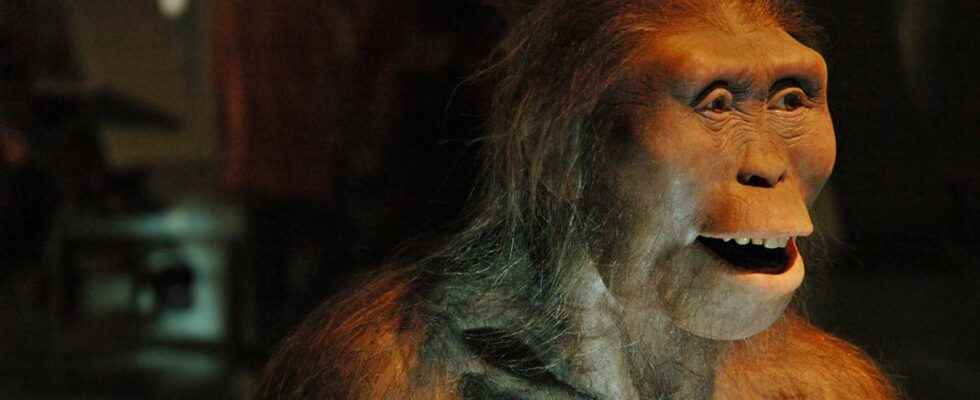A figure well known to the French, both for his work on the origin of Man with the discovery of Lucy and for his passion for mammoths, the paleoanthropologist Yves Coppens has just died. Perhaps he is currently discussing the noosphere with other extinct legends such as Haroun Tazieff or even with the man who could have been one of his predecessors at the College de France and whose scientific work he admired, the paleontologist, geologist and philosopher Teilhard de Chardin.
For two generations of French people born after the Second World War, there were a handful oficons of Science who were also “savoir-fairers” to varying degrees. While the memories of Jacques-Yves Cousteaudespite the Cousteau Dayand D’Haroun Tazieffhave largely faded from the media landscape to the point that they are perhaps almost unknown to a large part of the millennial generation, there still remained among these icons the paleoanthropologist yves coppens.
Famous for his work on the origin of Man and co-discoverer with Donald Johanson and Maurice Taïeb ofAustralopithecus afarensis named Lucy on November 24, 1974 on the site of Hadar, in Ethiopia, on the banks of the Awash river, it was through his editor, Odile Jacob, that we learned this Wednesday, June 22, 2022 that he had died in the morning at the age of 87. The new touch particularly Futura since he was one of our godfathers, with other unfortunately disappeared, like Pierre-Gilles de Gennes and Axel Khan.
#yves Coppens left us this morning. My sadness is immense. Yves Coppens was a very great scientist, a world-renowned paleontologist, a member of countless foreign institutions, but above all a professor at the Collège de France and a member of the Academy of Sciences.
— Odile Jacob (@EditriceOJacob) June 22, 2022
Remember that at the time of its discovery, Lucy was the oldest and most complete fossil skeleton of thespecies extinct Australopithecus afarensis known because it had been found in soils approximately 3.18 million years old. Possessing characteristics showing that she could be bipedal during her lifetime, Lucy has long been considered the representative of a species at the origin of the human line, which had therefore greatly contributed to the notoriety of its discoverers and consequently ofyves coppens. But, today, the majority of researchers believe that the branch of Australopithecus afarensis is not the one who gave birth to the genre Homo.
DISAPPEARANCE. Paleontologist Yves Coppens has died aged 87. He was known for discovering Lucy, a 3 million year old ancestor. In 1978, he returned to this incredible discovery. pic.twitter.com/a5miBUPqKd
— Ina.fr (@Inafr_officiel) June 22, 2022
The paleoanthropological discoveries of the following decades also cast doubt on the theory ofEast Side Story proposed by Yves Coppens. He explained in a very plausible way the acquisition of bipedalism by hominins by the combined effects of chance and necessity, in this case by the fact that some of the hominins would have been forced to get up to see in the distance. response to the transformation of forests into savannahs following a climate change caused by the birth of the Great African Rift. It was a question of seeing in the distance to find food or identify the approach of predators early on. More details and the reasons why this theory is today rather abandoned can be found on the site of Hominids.com.
Still, the many contributions of Yves Coppens enabled him to pursue a career at the highest level, first at the Sorbonne (Laboratory of Paleontology of the Vertebrates and Human Paleontology, 1956), then at the National Museum of Natural History, at the Museum of Man and finally at the Collège de France (Chair of Paleoanthropology and Prehistory, 1983).
We take the measure of his influence both as a scientist and as a popularizer with a few tributes to one of the manifestations of the noosphere of Teilhard de Chardin.
Paleontologist Yves Coppens, co-discoverer of Australopithecus Lucy, has just died. In 2018, he came to tell us about his devouring passion for his profession, which he affectionately nicknamed his “archaeologist”. pic.twitter.com/s5OeqVrTnU
– France Culture (@franceculture) June 22, 2022
Videoconference on Monday February 15, 2021, with paleontologist Yves Coppens. Research on the origins of man dates back to the 19e century ; remains of fossil men have been discovered in Europe, then in Asia and finally in Africa. The origin of Man was thus carried from one continent to another until his fixation in tropical Africa. Sixty years of international research in this region have made it possible to draw a phylogenetic tree of Man for about 10 million years, with a large number of its branches. © MNHN, 2021
Interested in what you just read?
